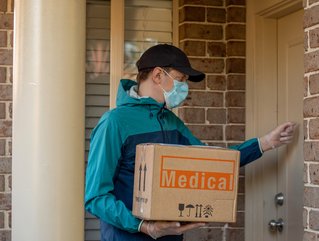How electronic drug delivery will transform the supply chain

Now the phrase electronic drug delivery may invoke images from sci-fi classics and most likely include some form of robotics, however, the reality is a lot more down to earth. Electronic and connected drug delivery is an exciting new trend in the medical sector that is opening up a host of new opportunities for patient-administered therapy.
So, what is electronic drug delivery?
Drug delivery systems are an integral part of the healthcare ecosystem. Patient health outcomes hinge on the precise delivery of medication aligned with the regimen prescribed by medical practitioners. Electronic drug delivery is moving away from the stereotypical format of medication or syringes that must be administered by healthcare professionals. The movement is towards smaller, smarter and wirelessly connected electronic devices that allow patients to administer medication in the comfort of their own homes. This trend is revolutionising the patient-care framework, empowering those with ongoing health conditions to take control of their care and receive continuous treatment without needing to be in a healthcare facility.
The emerging technology
Remote medical care is a fast-evolving area that has been propelled even further over the past couple of years and is very much being driven by innovation in the medical device sector. The global electronic drug delivery market itself is projected to reach US$119bn by 2024. The key delivery devices in scope for digital drug delivery include inhalers, injectors, infusion pumps and nasal sprays.
For example, there are new developments currently in the process for smart infusion pumps used in intravenous infusions. These can deliver sensor-powered intelligent flow control or device life monitoring, all of which will help monitor patient condition and run clinical analytics and diagnostics to generate condition-based recommendations to modify drug regimens.
One example of amazing innovation is 3M’s Intelligent Control Inhaler. Inhalation therapy hasn’t changed much in the last 50 years and actually many patients are not using their inhalers correctly. 3M’s new technology is breath-actuated so that patients don’t have to coordinate their in-breath with the triggering of the device. It can even provide performance feedback and tips on user techniques to promote accurate use.
Future of innovation
Many of these devices are due for release into the market in the next few years, but what about beyond that? There are a lot of discussions surrounding the future of medicine, whether it’s wearables or personalised medicine, but for drug delivery, there are debates that tech-enabled pills could be the next stage. These sensor-enabled pills can track when medication is taken and even slow-release medication over time, particularly beneficial for those who may have difficulty remembering to take medication.
Supply chain implications
Whilst this evolving new sector will transform the way in which treatments are delivered, there is going to have to be considerable changes to the supply chain to be able to accommodate this new way of patient care.
From a manufacturer’s perspective, they will need to consider how to scale up production effectively to be able to meet demand. This will be a lot more unpredictable as it’s based on patient changes rather than a hospital understanding they will need X number of X-rays in the next year. This new area of devices will also have to be transported more sensitively than, say, traditional equipment. Due to the specialist components used in these new devices, they will be a lot more susceptible to vibrations or temperature. Security across the supply chain has always been important in the healthcare sector, but as devices become more advanced, more specific, and ultimately more expensive, security is going to become even more critical. Those in the industry are seeing greater importance in supply chain visibility; there has been an uptake in digital solutions such as IoT sensors that are not only able to monitor real-time location but also vital conditions such as temperature and humidity. This helps ensure devices are safe throughout the entire logistical process.
For healthcare providers, they need to understand where the patients will be able to access these devices to use them from home. Will they only be available through hospitals or GP’s or could they be more easily accessible through pharmacy networks? Patients are valuing convenience in their healthcare more and more and healthcare is becoming more of a consumer product every day. The likes of injections and inhalers are typically picked up at a patient’s local pharmacy, so keeping the same structure would be beneficial. Therefore, healthcare providers need to understand how they will distribute these specialist goods safely on a more local and demand-driven basis.
What does the future hold?
We cannot ascertain for certain what the future of drug delivery will look like, but we do know that electronic systems will play a much bigger part. Medical care will become more personalised, digitally focused and data-driven. To achieve this, there needs to be a shift from the traditional healthcare infrastructure to one that stems much further than a hospital wing.
Byline from James Wells, UK International Freight Manager






